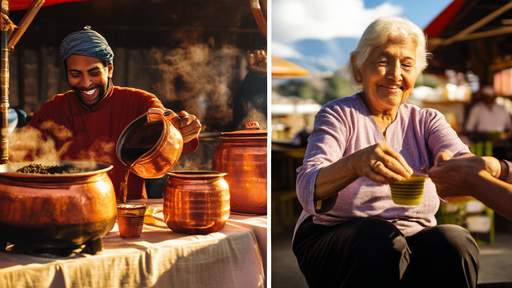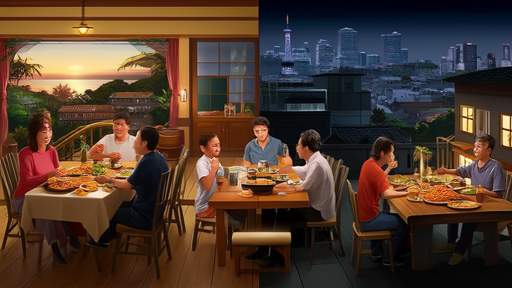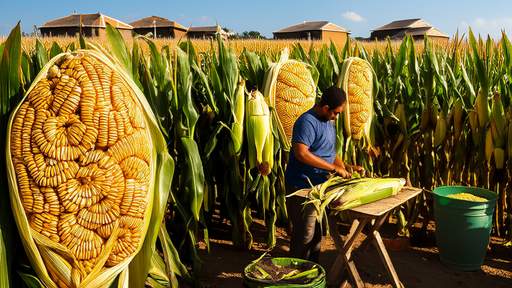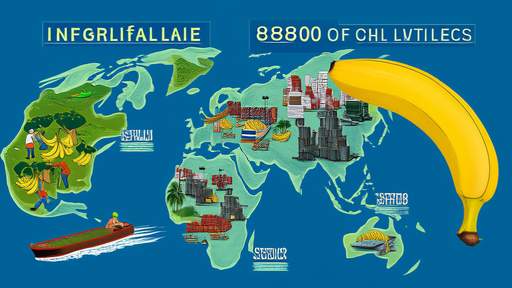The rhythm of human life is often measured in meals, yet the clock hands point differently across cultures when it comes to dining. While some societies consider 5 PM the golden hour for supper, others barely stir their pots before midnight. This global variation in mealtimes isn’t just about personal preference—it’s a fascinating anthropological mirror reflecting climate, history, labor patterns, and even spiritual beliefs.
In many Anglo-Saxon cultures, particularly the United States and Britain, the early bird catches the dinner. The 5 PM meal aligns with the traditional "workday" structure—fueling up after office hours but leaving ample evening time for leisure. This schedule stems from 19th-century industrialization when factory whistles dictated life. The famous British "tea time" at 4 PM historically bridged the gap between light lunches and late suppers. Yet contrast this with Spain’s 9 PM dinner minimum, where the sun lingers until 10 PM in summer and the concept of "siesta" reshapes the entire daily calorie distribution.
Venture further south to Argentina, and midnight steak dinners aren’t just acceptable but expected. Buenos Aires restaurants fill up at hours when Parisian kitchens have long closed. This isn’t mere Latin flair—it’s a cultural adaptation to avoid the scorching afternoon heat, pushing all social activities, including dining, into the cooler night. Similarly, in sweltering Middle Eastern cities like Dubai or Cairo, sunset iftar meals during Ramadan often stretch past 2 AM, transforming streets into vibrant food bazaars when Western cities sleep.
The relationship between dinner time and daylight reveals deeper patterns. Nordic countries exhibit seasonal flexibility—Stockholm’s 3 PM winter darkness prompts earlier meals, while summer’s midnight sun enables all-night barbecues. Japan presents an intriguing hybrid: salarymen might grab bento boxes at 5 PM, yet izakaya pubs thrive until dawn. Here, the meal timing becomes social code—family versus work relationships, private versus public nourishment.
Religious practices further complicate the global dinner clock. In India, Hindu families might dine before 8 PM following ayurvedic principles that link digestion to solar cycles, while Mumbai’s night owls queue for pav bhaji at 1 AM near film studios. Jewish Shabbat dinners begin before sunset on Fridays, whereas Morocco’s post-sunset ftour meals during Ramadan make midnight the new lunchtime for a month. These aren’t arbitrary choices but culinary chronobiology embedded in spiritual traditions.
Modern globalization hasn’t erased these differences—it’s created fascinating hybrids. Seoul’s office workers might eat early company dinners at 6 PM, only to continue with "second round" spicy chicken feet at 11 PM. New York’s food delivery data shows distinct spikes: Upper West Side families order at 6:30 PM, while Williamsburg hipsters peak at 9:45 PM. The pandemic added another layer, with "WFH culture" blurring mealtimes as kitchen grazing replaced formal dining.
What emerges isn’t a judgment of "right" dining hours but a revelation of how humans organize time around sustenance. The Spanish abuela simmering her cocido at 10 PM and the Midwestern American firing up the grill at 4:30 PM are both correct within their cultural ecosystems. As international travel and remote work reshape our schedules, the anthropology of dinner timing becomes less about tradition and more about the fluid negotiation between biology, society, and personal rhythm.
Perhaps the ultimate lesson lies in Mediterranean cultures where meals stretch for hours regardless of clock time—the emphasis being on communion rather than chronology. In our increasingly divided world, that’s a culinary philosophy worth savoring, whether at dusk or under the stars.

By /Jun 6, 2025

By /Jun 5, 2025

By /Jun 5, 2025

By /Jun 5, 2025

By /Jun 5, 2025

By /Jun 5, 2025

By /Jun 5, 2025

By /Jun 5, 2025

By /Jun 5, 2025

By /Jun 5, 2025

By /Jun 5, 2025

By /Jun 5, 2025

By /Jun 5, 2025

By /Jun 5, 2025

By /Jun 5, 2025

By /Jun 5, 2025

By /Jun 5, 2025

By /Jun 5, 2025

By /Jun 5, 2025

By /Jun 5, 2025